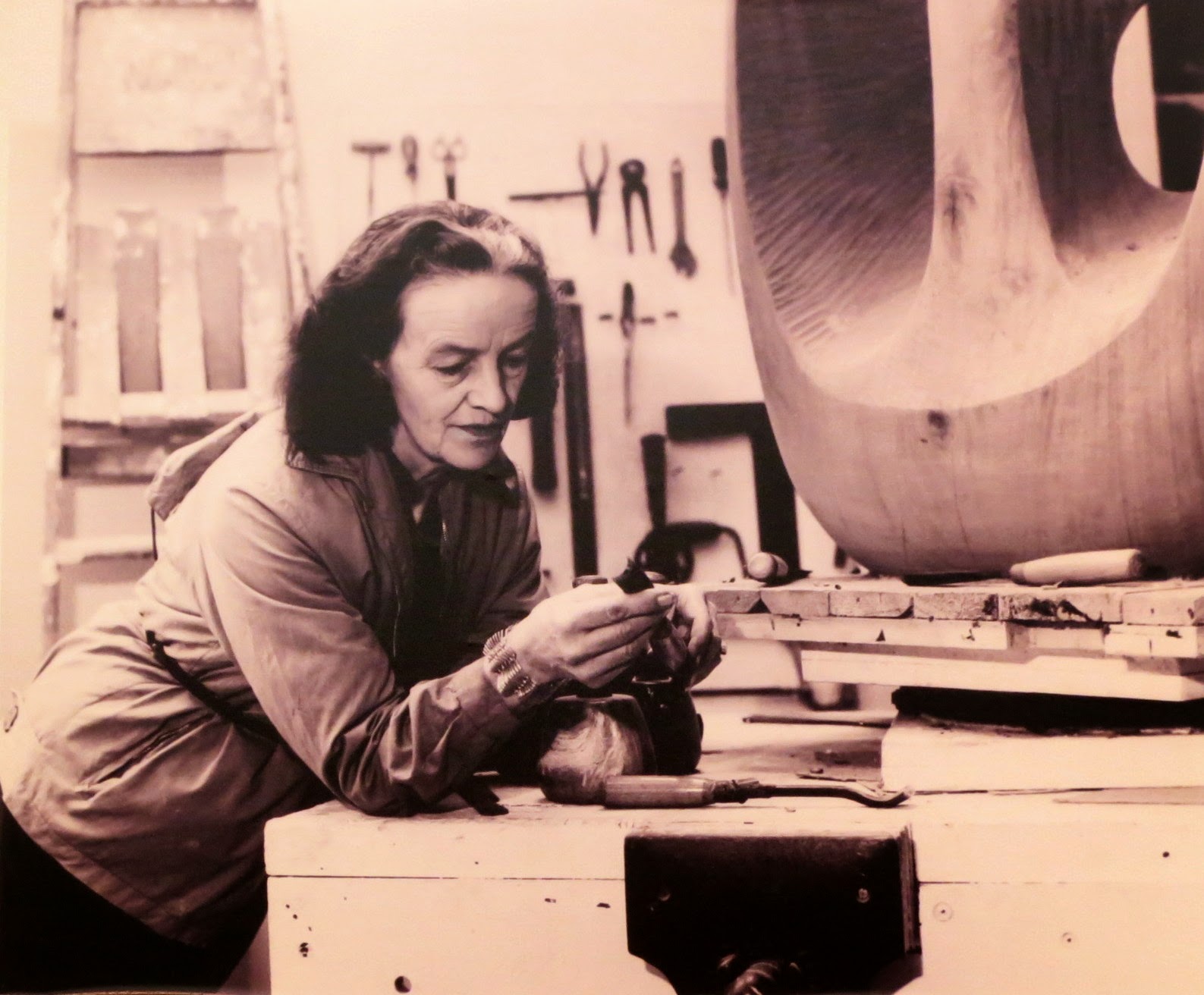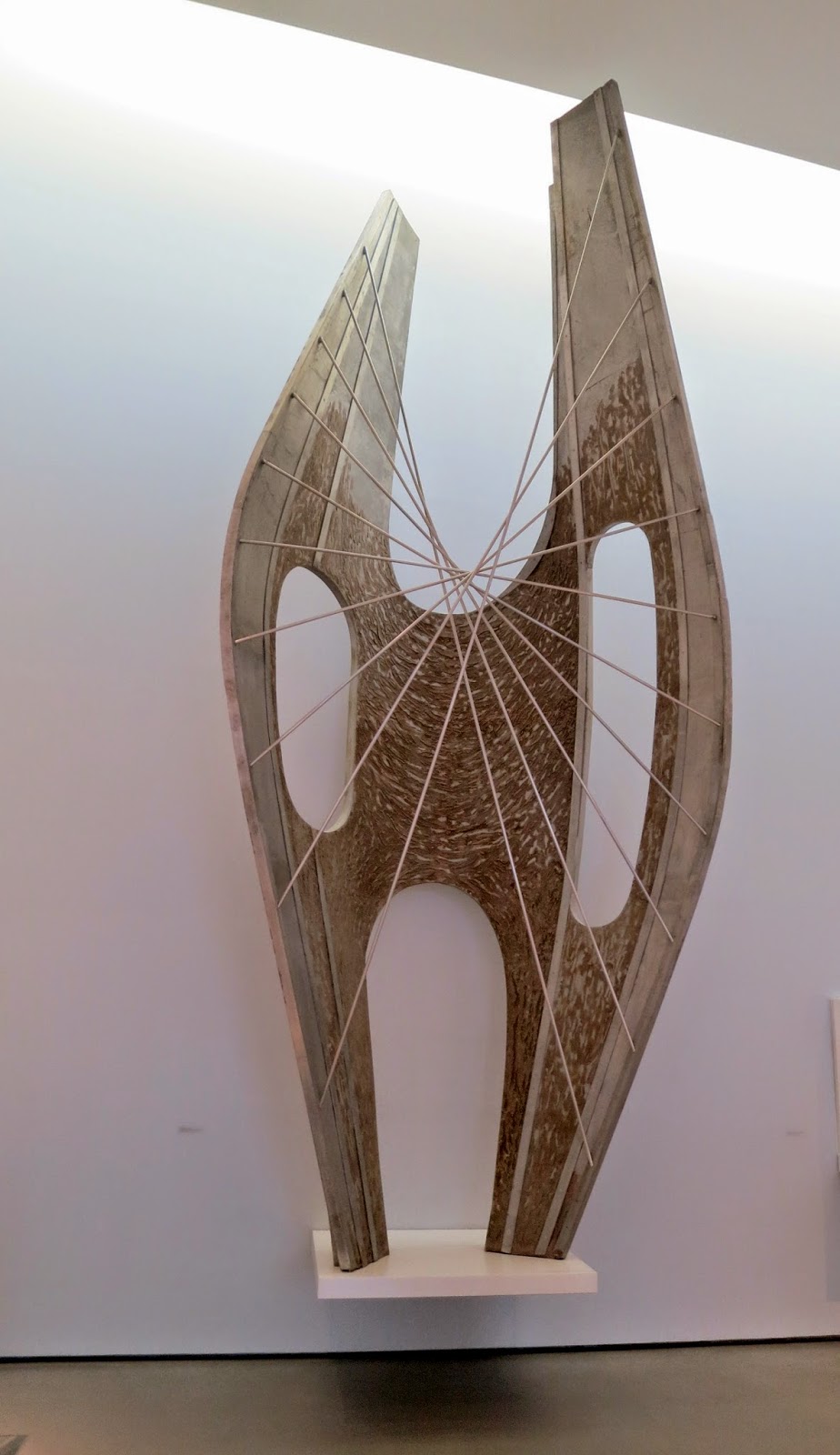'I, the sculptor, am the landscape.
I am the form and I am the hollow,
the thrust and the contour'.
(Barbara Hepworth, 1961)
Barbara Hepworth at the Hepworth, Wakefield.

Central to the exhibitions in this museum is a large collection of Barbara Hepworth's sculptural prototypes, in plaster and aluminium. They show us how she worked, revealing her thought processes, enabling us to follow her emotional and intellectual journey as a sculptor.
Cool Moon, from the Aegean Suite, 1971 (lithograph)
Hepworth saw printmaking as an opportunity to work on ideas that would eventually translate into sculpture. The combination of precise line and form in works such as this one, resemble her late carvings in white marble, and the areas of organic texture have an affinity with her bronzes and their heavy patina. However, it would be too simplistic to view this as a one-way relationship: Hepworth expanded on the shapes and designs of pre-existing sculptures and combined them with the distinctive paint-like washes of lithography, to produce images that embody both the qualities of printmaking and sculpture.
Oblique Forms, 1969 (lithograph)
Two Forms with White (Greek), 1963
one more view.
The Hepworth Plasters:
One of the galleries displays a collection of the surviving prototypes in plaster and aluminium from the artist's studio. The majority are original plasters, the first stage in the process of casting a sculpture in bronze or aluminium, rather than finished works. Hepworth did not view the prototypes as works of art in themselves and, although she occasionally exhibited them, she never sold them. The dense display, evoking her studio environment did not work for me - I found it difficult to appreciate each individual piece.
Spring, 1966 (plaster with strings)
one more view
Winged Figure, 1061-62, (aluminium with Isopon for surface texture)
Trophy (Flight), 1965 (plaster, painted light blue/light brown)
Maquette for Dual Form, 1965-66, (plaster, painted gold, brown, green and blue)
Construction (Crucifixion), 1966-67 (aluminium, part painted)
Hollow Form with Inner Form, 1960 (plaster)
Core, 1955-56/1960 (plaster, painted black, white)
The Studio:

Just before the outbreak of WWII, Hepworth left London for St Ives, Cornwall. She bought a studio in the centre of St Ives in 1949. 'Finding Trewyn Studio was a sort of magic', she wrote. 'Here was a studio, a yard and garden where I could work in open air and space'.
The displays in this gallery explore her studio environment, working practice in plaster, and the monumental commissions she received in the last fifteen years of her life.
















No comments:
Post a Comment